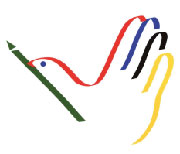In the past, donors and groups providing security to journalists in less-developed nations tended to export a Western, military-style of training designed for a war-time environment. But the danger of covering combat is one thing. Being fired upon by a motorcycle-riding assassin is another–as is being sexually molested in a crowd, discovering a video camera in one’s bedroom, or having one’s phone calls intercepted. And then there is emotional toll of losing dear colleagues, and wondering whether you or your family will be next.
This week in Central America, two major international programs are trying to tailor journalist security to specific regional conditions. A U.S. State Department-led undertaking, being launched in San Salvador today, is intended to provide region-specific training in several spots worldwide. In Costa Rica, the United Nations Educational, Scientific and Cultural Organization is continuing an ambitious worldwide effort to improve security for the press and combat impunity in journalist murders. To mark World Press Freedom Day, May 3, UNESCO has organized an array of discussions, “Safe to Speak.”
Journalists still face deadly combat risks, in Syria most notably, and hazardous street conditions in nations such as Pakistan. There is still great need for hostile-environment training that focuses on risk reduction and emergency first aid, among other topics.
Yet even in conflict-ridden nations, most journalists are killed in targeted murders. And the murderers get away with it in nearly nine out of ten cases, according to CPJ research. Journalist murders have been rampant for years in the Philippines, Mexico, and Pakistan, and they recently begun rising in Somalia, Brazil, and Nigeria. Journalists who face the threat of targeted violence in reprisal for their reporting require particular skills to stay safe, such as how to identify, assess, and reduce risk, or how to detect the surveillance that research shows often precedes violent attacks.
Elsewhere, in places as diverse as northern Iraq, Venezuela, Tunisia, and Bangladesh, journalists covering civil unrest face risk from thrown objects, tear gas, beatings, and sexual aggression. In these situations, journalists should understand how to safely navigate among hostile police and crowds, how to spot the signs of escalating danger, how to work in teams to conduct their work while staying aware of the situation, and how to escape from an assailant’s grip without provoking further confrontation.
In other nations, from Azerbaijan to China, journalists often work under digital or physical surveillance. CPJ has documented cases in which state-sponsored spies or criminals have invaded journalists’ privacy in efforts to intimidate or humiliate them. More common is the interception of communication or copying of data, which endangers not only journalists but their sources as well. The same broad principles of awareness, risk reduction, and self-protection that are applied in the streets are equally important online. As the Syrian conflict demonstrated, physical and digital security protocols merge when it came to the operation of satellite phones.
Physical and digital training must also be integrated with emotional awareness. That means having the skills to work through a traumatic situation as it unfolds, and understanding how trauma can affect you long after the crisis has passed.
Full disclosure: The organization that I founded and run, Global Journalist Security, has been carrying out some of this training for journalists in Mexico, Syria, and elsewhere, and is involved in the global effort launched today at El Salvador’s storied Jesuit University of Central America. That effort is sponsored by the U.S. State Department’s Bureau of Democracy, Human Rights and Labor.
But my group is just one of many providing this kind of assistance to journalists. And truly enhancing security for journalists goes well beyond training; it requires long-term efforts to improve the societal environment in which journalists work. The creation of professional networks, which enable journalists to speak as one whenever colleagues are at risk, is key to that effort.
The biggest challenge for the profession is reversing the climate of impunity that exists in so many nations, a condition that enables corrupt and criminal forces to impose the most brutal form of censorship. An attack on one journalist breeds uncertainty and self-censorship among dozens of others. An unpunished attack encourages more of the same. Why is this so hard to address? One reason may be that government officials are themselves suspected in more a quarter of all journalist murders worldwide, according to CPJ research.
This week, though, UNESCO is convening advocates and experts from around the world not only to address the need for more security training but to pursue action in the individual nations where impunity reigns. I’m joining my colleagues from CPJ and many other freedom of expression groups in taking part.
The need for both training and action has never been greater.
